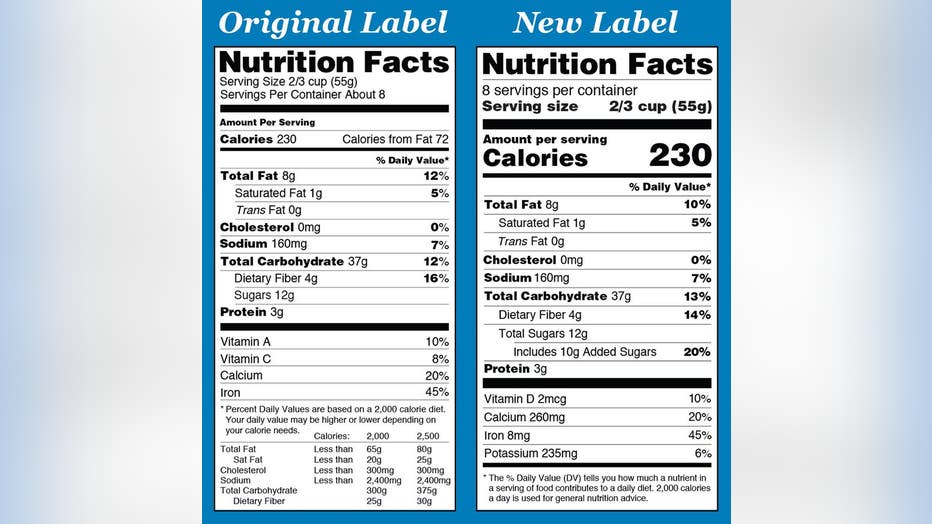3 big changes to your food's nutritional label
ATLANTA - Take a look at the food packages in your pantry. The labels are different. And there are a few significant changes that will matter to you - the consumer.
And it's about time. Food labels haven't really changed in any meaningful way in 20 years, and we are different consumers than we were two decades ago. Namely, the amount of food we eat in one sitting is different, and the science that helps us to understand chronic disease like obesity is better. So the food label got a make-over.
Let's take a look here:

A side-by-side look at food nutritional labels. (FDA)
The old label is on the left. It's still on the shelves on some products. The new label is to the right. It's being phased in so both will be in stores for some time. The first thing you'll notice is that the calorie info on the new one is big and bold. It's easy to see. You don't have to hunt for it. But, reading the serving size is different.
This is a little tricky. According to registered dietician nutritionist Jerlyn Jones, the serving size info reflects the portions we eat today, not what we were eating 20 years ago.
"When you do look at the serving size, it is not a recommendation. It is a serving size on what typically Americans eat in one of those food containers; however, it's different than the recommended food servings."
You still have to know what calorie intake you should be taking in for your age, size, and sex, but the new label more accurately reflects what we eat in real life.
Here’s another difference. The old label showed vitamins A and C. That's gone. You will now see vitamin D and potassium. Apparently, we get enough of A and C in our diets from fortified foods. But what we are low in D and potassium, so the label helps you out with that.
And one more change that is significant for some folks. Let's go to the graphic again: old one on the left, new one on the right. Both show the carb, fiber and sugar totals, but the new label goes deeper. It shows you what percentage of those sugars are added in, not naturally occurring. For example, Jellies and jams have natural sugar, but manufacturers often add more. Now you'll know how much more.
I know this is a bit of a health segment, and you'll probably get a deeper dive from Fox Health reporter Beth Galvin, but it's a consumer shift, too.

